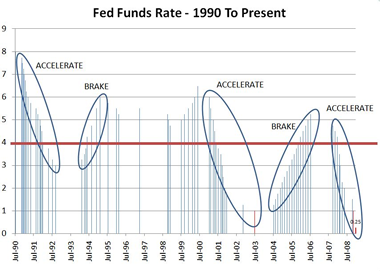More High Temperature Extremes
SEARCH BLOG: GLOBAL WARMING
Craig James, a blogger at WOOD TV in Grand Rapids, Michigan picked up on a couple of my posts regarding the lack of new high temperature extremes in the U.S.
This created some animated comments including one from a person who only identified himself as "gingles." He was having a difficult time with the idea of using only state high temperature records rather than daily high temperature records from all reporting locations. He couldn't see how only 600 possible records in the U.S. could show anything.
Well, there are those who don't like the idea of a sample representing a larger population, but this is an approach used in many areas of life... from politics to medicine. Let's examine the issues:
- only 600 records
Annual Possible Records "Normal" Annual Number of Records (120 year average) Monthly State Records 600 5 Daily State Records 18,250 152 Monthly Reporting Station Records 342,000 2,850 Daily Reporting Station Records 10,402,500 86,688
- 50 states times 12 months are 600 possible records. The number of states and months remains consistent and I must presume that even Alaska and Hawaii had temperatures recorded as far back as 1880... although they did not become states until 1959.
- Records that tie existing records are credited to the last occurrence, which bias the record count toward the latter years.
- monthly records represent the outcome of the total population of month high readings over 120 years... 72,000 possible opportunities to set a record... with each year having the same opportunity to set a record. While the opportunity to set a record is relatively high when there are few years in the dataset, with 120 years, there is virtually no bias for when in the sequence a year's data was recorded... first and last have the same chance to set and retain a record.
- using daily records for states might change the outcomes somewhat, but probably not significantly
- using daily records for all measuring stations would skew the results toward the latter years because of the ever-increasing number of recording stations... much higher now than in 1880 (which should also increase the opportunity for recording a state high temperature record in the latter years).
We see that for the 50 states x 365 days there are 18,250 opportunities to set a state daily record.
Now, when you get down to the recording station level, the number of opportunities to set a daily record is thousands of times higher.
"The Master Station History Report is a listing of the approximately 30,000 stations documented in the NCDC Station History Data Base. They are located on all continents but more than 95% are US sites."
Let's see... that's 30,000 x .95 x 365 days or 10,402,500 opportunities to set a record each year. That would be around 86,000 new records per year on average... "normal"... if there were completely random records. And remember that many of those stations didn't exist in the 1930s.
How about 200,000 per year for the global warming greater frequency? So a thousand or so reporting station records set on a hot day is really nothing unusual.
But the database for individual reporting stations is "flakey" with multiple identifiers for single sites which means this exercise is futile or requires a lot of "data cleaning" to get to individual site averages.
- the U.S. is too small to represent "global warming"
- the U.S. weather is not a closed system; it is influenced from changes around the world
- the U.S. may be a small part of the earth's surface if oceans are included, but it is a much larger part of the total land area
..








